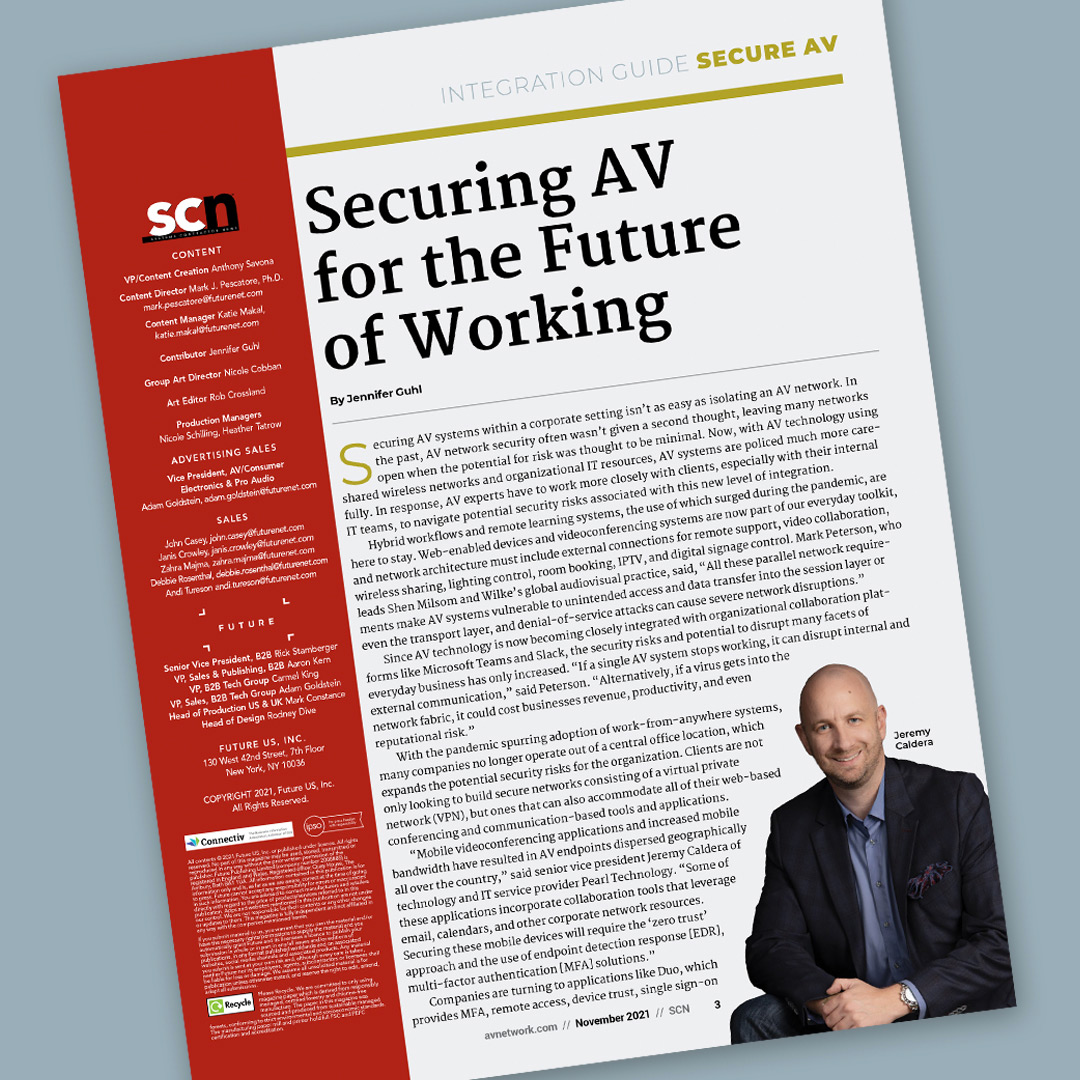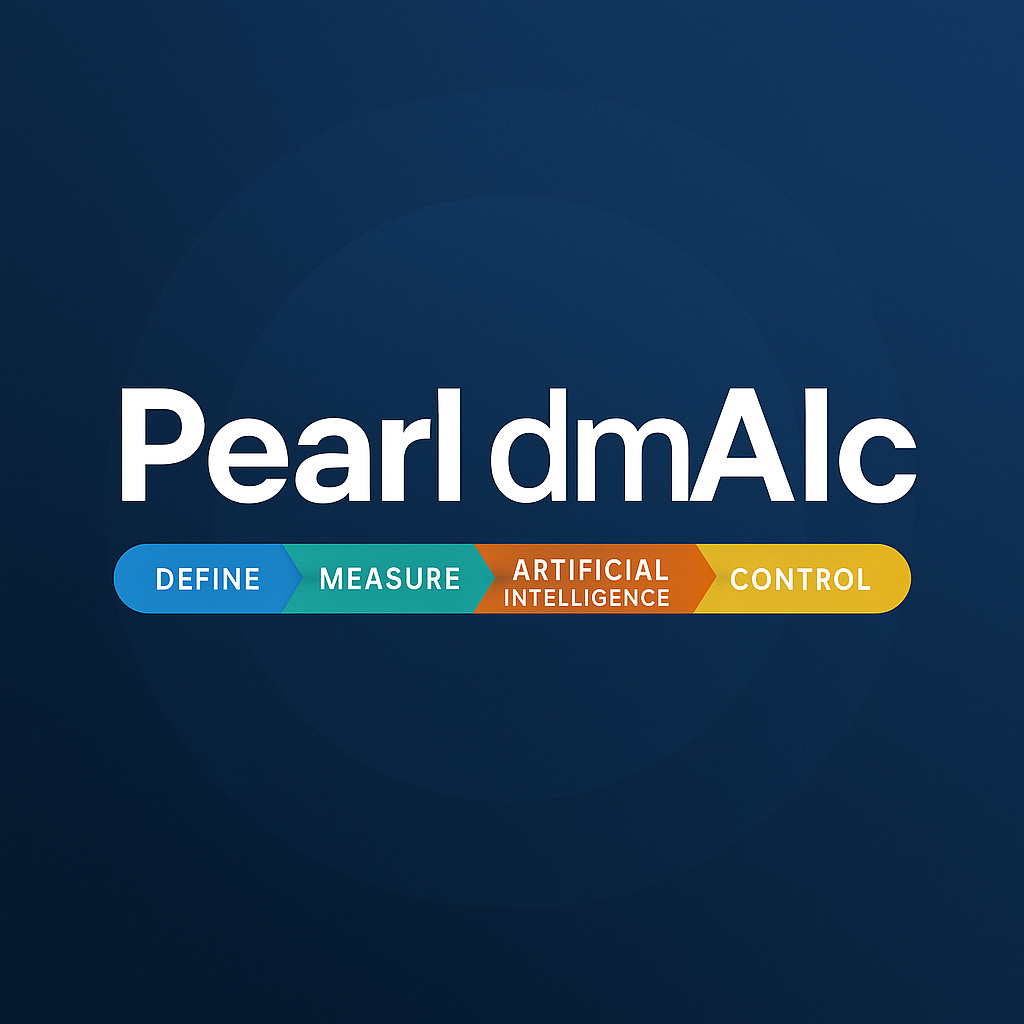Pearl Technology Featured in SCN Magazine: Today’s audiovisual (AV) technology has the potential for more security risks and business disruption than ever before. To address this issue, Pearl Technology was recently featured in an article in SCN Magazine. Read the article to learn more about the importance of a comprehensive solution that combines cybersecurity and audiovisual integration… and contact us to learn how we can provide the solutions your company needs for business continuity. IT solutions| Cybersecurity | Data Centers | Audiovisual Integration
Securing AV for the Future of Working
By Jennifer Guhl
Securing AV systems within a corporate setting isn’t as easy as isolating an AV network. In the past, AV network security often wasn’t given a second thought, leaving many networks open when the potential for risk was thought to be minimal. Now, with AV technology using shared wireless networks and organizational IT resources, AV systems are policed much more carefully. In response, AV experts have to work more closely with clients, especially with their internal IT teams, to navigate potential security risks associated with this new level of integration.
Hybrid workflows and remote learning systems, the use of which surged during the pandemic, are here to stay. Web-enabled devices and videoconferencing systems are now part of our everyday toolkit, and network architecture must include external connections for remote support, video collaboration, wireless sharing, lighting control, room booking, IPTV, and digital signage control. Mark Peterson, who leads Shen Milsom and Wilke’s global audiovisual practice, said, “All these parallel network requirements make AV systems vulnerable to unintended access and data transfer into the session layer or even the transport layer, and denial-of-service attacks can cause severe network disruptions.”
Since AV technology is now becoming closely integrated with organizational collaboration platforms like Microsoft Teams and Slack, the security risks and potential to disrupt many facets of everyday business have only increased. “If a single AV system stops working, it can disrupt internal and external communication,” said Peterson. “Alternatively, if a virus gets into the network fabric, it could cost businesses revenue, productivity, and even reputational risk.”
With the pandemic spurring adoption of work-from-anywhere systems, many companies no longer operate out of a central office location, which expands the potential security risks for the organization. Clients are not only looking to build secure networks consisting of a virtual private network (VPN), but ones that can also accommodate all of their web-based conferencing and communication-based tools and applications.
“Mobile videoconferencing applications and increased mobile bandwidth have resulted in AV endpoints dispersed geographically all over the country,” said senior vice president Jeremy Caldera of technology and IT service provider Pearl Technology. “Some of these applications incorporate collaboration tools that leverage email, calendars, and other corporate network resources. Securing these mobile devices will require the ‘zero trust’ approach and the use of endpoint detection response [EDR], multi-factor authentication [MFA] solutions.”
Companies are turning to applications like Duo, which provides MFA, remote access, device trust, single sign-on (SSO), and other secure access capabilities when configuring security for their company’s web-based applications. Peterson explained, “AV devices will need to support Duo’s use of asymmetric cryptography to verify communications between cloud servers and AV apps running on smartphones in order to be trusted for use inside an enterprise’s environment.”
Does your business need help with IT solutions, cybersecurity, data centers, or audiovisual integration? Contact us to see what technology solutions might work best for you.





